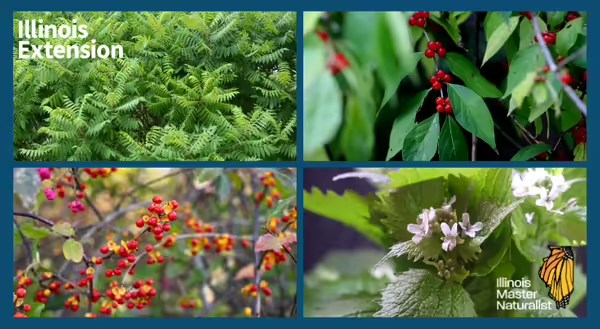
When we think of the bawdy, overbearing characteristics of alien invasive species, often what first comes to my mind is their early-to-rise, late-to-bed season of growth. By emerging earlier than our natives, invasive species leaf out, scoop up all that precious sunlight and moisture, then quickly shade out the natives under their canopy that are still waiting for their time in the sun, which may never come.
But there is something more insidious lurking below in some plants, not only the aggressive root systems of these aliens, but also some chemical warfare at the biochemical level: Allelopathy. Certain plants produce biochemicals that can diminish the vigor of other nearby plants. These allelopathic chemicals can hinder seed germination, growth rate, photosynthetic ability, reproduction, and ultimately survival of other species that lie under and nearby them.
Think of it as a growth no fly zone. By creating a chemical suppression of nearby plants, allelopathic species are eliminating the competition and can stride ahead to reach for their own Darwinian gold medal. The term allelopathy comes from the Greek words allelon and pathos; allelon meaning ‘each other’ and pathos means ‘to suffer’. The concept of allelopathy had been observed by ancient cultures worldwide and was first recorded by Theophrastus in 350 B.C.
But it is not only invasive species that produce allelopathic chemicals. The most common example you may already be aware of is our native Black Walnut (Juglans nigra). Black walnuts produce an allelopathic chemical called juglone. The amount of juglone varies within the walnut tree; highest concentrations are found in the roots, nut hulls and buds; leaves and stems contain lesser amounts of juglone.
Most people who know about the allelopathic nature of the black walnut’s juglone on plants first think of the vegetable garden and the Solanaceae family (tomatoes, peppers, potatoes and eggplant.) It might be more of a surprise that some trees and shrubs including hackberry, crabapple, apple, basswood, pine, spruce and some viburnums are also sensitive to juglone.
Plants that are juglone sensitive may display symptoms of yellowing of leaves, wilting and eventually death. Allelopathy is often overlooked as many people haven’t even heard of it and there is a dizzying array of other biological and abiotic causes for these symptoms. In research studies, allelopathic impacts are a controversial subject--even after hundreds of studies, it is difficult to isolate a single factor in the field due to the myriad of variables and individual conditions.
In a landscaped setting, desirable plants that exhibit allelopathy can be strategically sited to avoid negative impacts. But in nature, allelopathy paired with the aggressive growth of invasive species can decimate native plant populations. Studies also show that allelopathy can continue to have suppressive impacts even after strident mitigation and restoration efforts if the invasives have been persistent for some time. Long term changes to the soil can slow or even inhibit the return of native species.
Our invasive species that produce allelopathic compounds read like a list of the most wanted alien invaders of Illinois. Amur honeysuckle (Lonicera maackii), garlic mustard (Alliaria petiolatea), lesser celendine/fig buttercup (Ranunculus ficaria), Oriental bittersweet (Celastrus orbiculatus), tree of heaven (Ailanthus altissima), Japanese knotweed (Fallopia japonica) and, newer on the scene, Japanese stilt grass (Microstegium vimineum) all produce allelopathic chemicals.
So the next time you are out in the field removing invasives, you can smile a little broader with each pull, cut and dig. You are not only removing just what you can see, but also helping to remove the invisible enemy of allelopathy.
Learn more about Illinois invasive species.